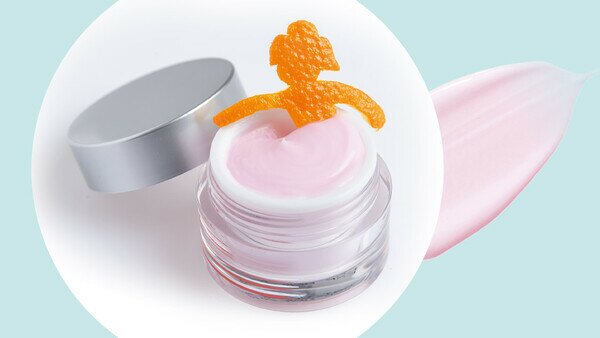Summertime is here; it’s the season for shorts, miniskirts and swimsuits! But what a letdown it will be, if the skin is inflicted with unsightly cellulite (orange-peel like appearance). In a bid to restore the skin to its original smoothness, many ladies have turned to anti-cellulite creams for help. In a joint test organized by the International Consumer Research and Testing (ICRT) on 14 models of anti-cellulite creams available in the European market, the Consumer Council found that none of the test models could eliminate the cellulite. At best, the products were only able to slightly reduce the thigh circumference, and this effect was temporary, no better than standard body lotions, causing much disappointment to the users. While most of the test models are not available in Hong Kong, the test results are helpful to enable consumers to better understand the efficacy of such products.
Some 450 trial users, aged from 18 to 50, participated in the test, trying out the 14 international brands of anti-cellulite creams. Each model was put through a trial test by about 30 users for 4 weeks, during which their diet and life habit remained unchanged. By random selection, some of the trial users were given standard body lotions for test control purposes. In the evaluation of the product efficacy from different aspects, researchers compared the users’ thigh circumference before and after the trial, the morphological features (appearance of skin surface) of the cellulite, and by the use of infrared thermography to examine if there had been any marked improvement of the micro-circulation system under the skin.
Minimal reduction of thigh circumference
The test found all models only slightly reduced the users’ thigh circumference by an average of 1.2mm to 2.9mm, while the users applying only standard body lotion were achieved an average reduction of 1.3mm. The difference between the 2 groups was barely noticeable. The reduction in thigh circumference of the trial users could be attributed to the regular massage action when applying the cream with the effect of slightly reducing the interstitial fluid or accelerating lymphatic drainage. But it is believed that such an effect is only temporarily and may not necessarily improve the edemic condition in the long-term.
Minimal morphological improvement
Dermatologists were invited to assess the morphological features of cellulite on the users’ thighs, hips and buttocks. The assessment concluded that the efficacy of the anti-cellulite creams was low and the results were disappointing, with hardly any reduction in the number of evident depressions nor notable improvement in the reduction of the depth of the depressions, skin surface morphological alterations, and skin laxity, etc. At the best, the improvement was minimal.
Based on number of users with improved morphological features after the trial, the dermatologists assessment revealed that only around 40% to 63.3% of the users have benefited slightly from using the anti-cellulite products. For the trial users of standard body lotion, an average of 26.7% was found to have their condition slightly improved. Out of the 14 models, 8 were shown to have made improvement in the skin morphological features of half or above of the trial users, but the extent is so very light let alone total elimination of the cellulite.
Limited improvement in microcirculation
The test used infrared thermography camera to evaluate cellulite by scanning the thermal distribution of the skin surface. Different thermal zones (high and low temperature) as depicted in different colours can be indicative of the areas where cellulite may have developed. Through the analysis of the different coloured zones, their area and proportion, the changes in the vascular and lymphatic microcirculation system in the localized areas were assessed and the effectiveness of the tested anti-cellulite models were also evaluated accordingly. The test did not assess if the microcirculation changes induced by the test models could be sustained.
The results indicated that 30% to 60% of the trial users have experienced slight improvements in their microcirculation in localized areas. 5 models were shown to improve microcirculation in 50% or above of the trial users, but the extent was very slight. Indeed by using the standard body lotion an average of 23.3% users managed to achieve slight improvement in microcirculation system.
Meanwhile, an overseas dermatology clinical study summarized a number of research literature and stated that improvement of the orange peel appearance by topical application of anti-cellulite products (containing caffeine and/or vitamin A derivatives) is negligible, at all. Compared with non-active body lotion without anti-cellulite ingredients, the difference between the 2 types of products in improving the cellulite is hardly noticeable. This conclusion is similar to the findings of the tests conducted by ICRT.
Both expert opinions and research studies affirmed that the benefit of using anti-cellulite creams is minimal and the effect is short-lived. As the condition may vary from one to another individual and is not easily discernible to the naked eyes alone, consumers are advised to consider if the purchase of such products is good value for money. Instead, maintaining a healthy lifestyle and diet, with regular workout particularly on the body area of the fat accumulation, may well result in longer lasting changes.
Consumers using anti-cellulite creams are reminded of the following:
- When applying the cream, avoid sensitive areas, such as eyes and open wounds to prevent discomfort, stinging or itchiness;
- Wash both hands thoroughly after application;]
- People with sensitive skin should take note of the product ingredients paying particular attention to containment of any allergy-causing preservatives, fragrances or other allergenic ingredients.
The Consumer Council reserves all its right (including copyright) in respect of CHOICE magazine and Online CHOICE.



